Your School’s Name
Doodles Academy school subscriber since X/X/X
Renewal on X/X/X
This is what a private page will look like!
When we set you up with a school account, we create private pages just for your school. Each page represents a group within your school or organization. For each group page, you choose WHO in your organization can access it, you will choose WHICH projects they can access (including deciding if they will be teacher-led or student-led), and you will choose WHAT additional features belong on that page (links to lesson downloads, training modules, and assessments being just some of the options).
This opens up a lot of opportunities for you. For example, you can create groups for the grade-level educators at your school to teach the Art & Literacy curriculum, and also create a page for students to independently access during indoor recess, during station work, or for an after-school art-club. You can curate as many groups as you need; because we use demonstration videos to open most of our projects, teachers have a great deal of flexibility if they need to incorporate the curriculum into a distance learning plan. In addition, you have the ability to create teacher-led as well as student-led scenarios, allowing you to easily adjust your plans in the uncertain era of COVID. Because you have a private page, you can feel comfortable having your students access the content from their own homes if need be.
Below you’ll find the curricular options available (custom options also available):
Your Curricular Options
Slice, dice, and remix the following options into groups to suit your school’s goals. The following are unlinked samples for planning purposes, but on a live page the links would lead to whatever they are describing.
Teacher-led, Art & Literacy Curriculum
The following are the projects in the Art & Literacy series available with a teacher led option.
We used El Education and Bookworms to decide on topics, so if you use those curricula there is a direct relationship to the grades and the topics you are teaching in ELA.
If you don’t, while projects have corresponding text sets and vocabulary specific to the grades below, the projects themselves encourage independent problem solving and are easily adjusted for different levels. You can customize what grade each of these are taught in as you curate your groups. For example, if third grade teachers teach birds, you should absolutely include the Artist, Explorer, Scientist module even though it is listed as a 1st grade project.
Included with all grades
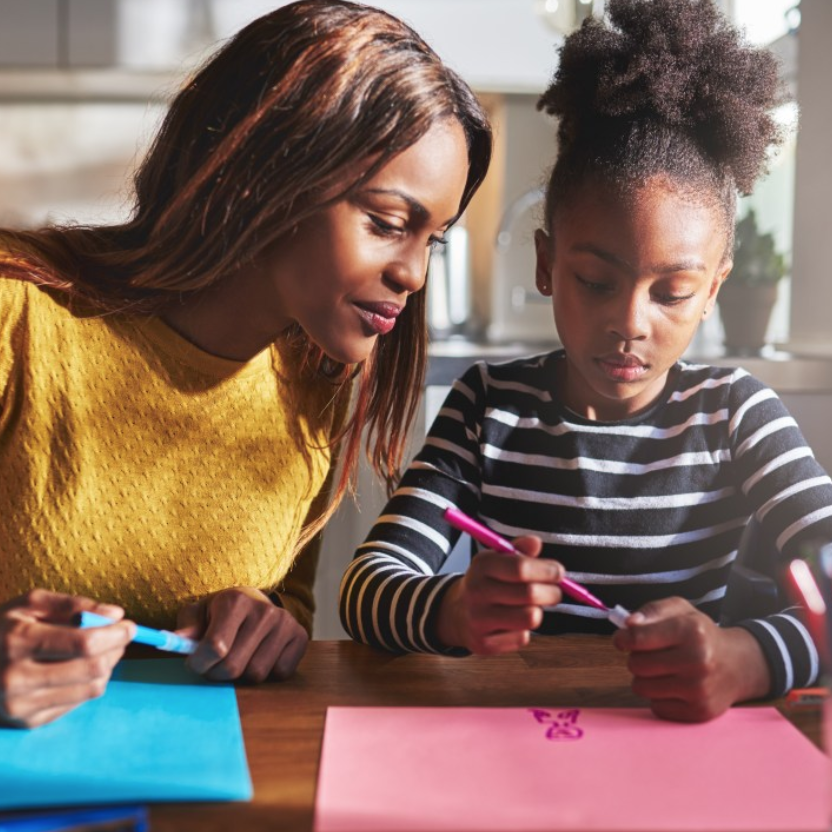
Art & Literacy Training
Link to Training
- Downloadable lesson plans
- Optional file uploads (by your design: points for your teachers to upload grades, assessments, photos, etc.)
1st Grade
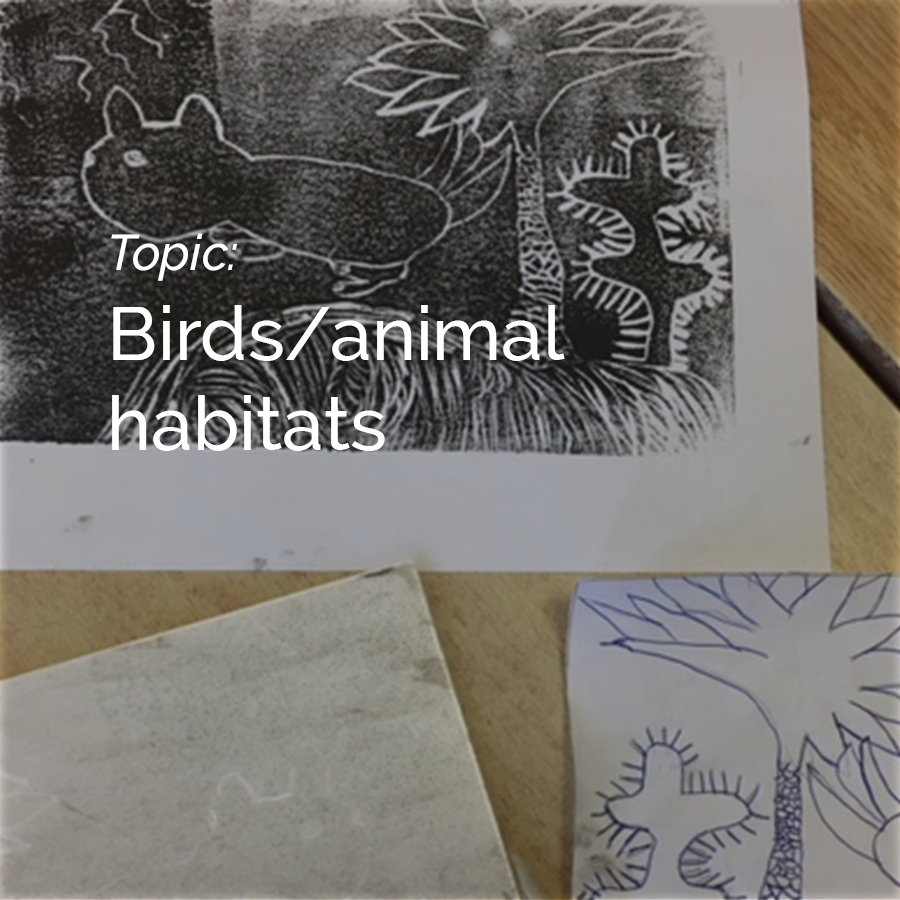
Artist, Explorer, Scientist
Students learn John Audubon & scientific drawing. They choose an animal, research it, and draw an accurate picture in it’s habitat. They finish by creating prints.
Primary Material: Pencil, printmaking
Link to Downloadable Lesson Plans
Link to Project

Designing the Zodiac
Students learn about constellations across many different cultures and create their own constellation and write their own origin story.
Primary Material: Oil pastels, watercolor
Link to Downloadable Lesson Plans
Link to Project
2nd Grade
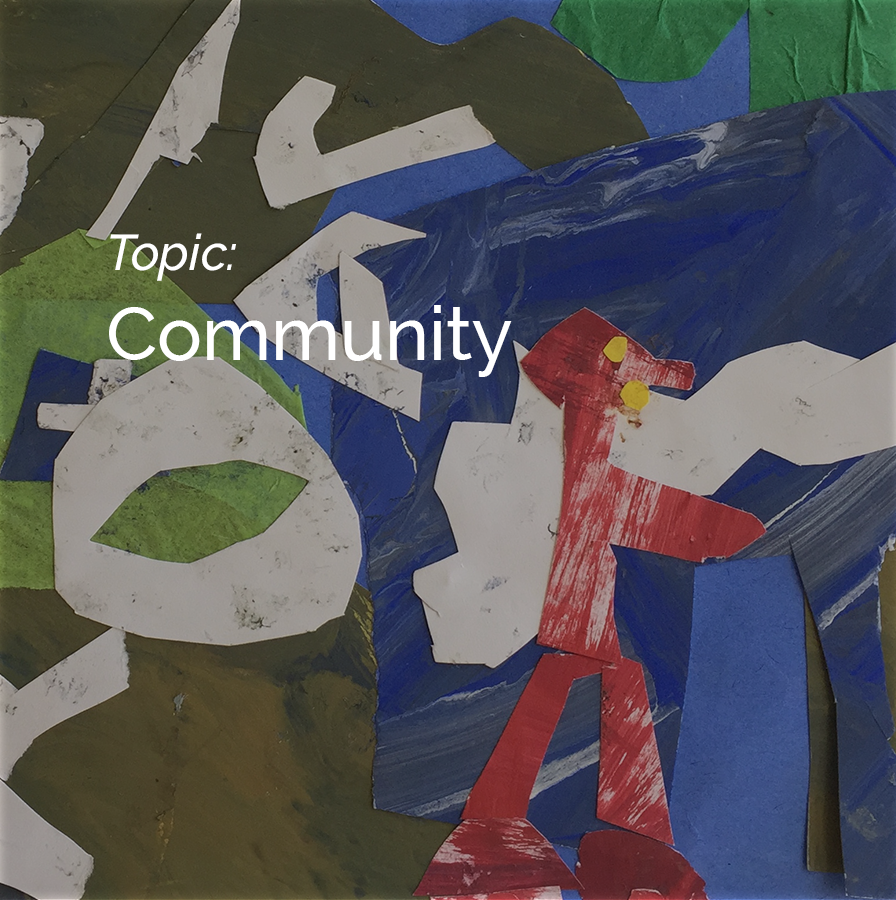
Around the Neighborhood
Students learn about Jacob Lawrence and the Harlem Renaissance. They make a collage that depicts their own neighborhood, with a focus on color.
Primary Material: Collage
Link to Downloadable Lesson Plans
Link to Project

Artist, Explorer, Scientist
Students learn John Audubon & scientific drawing by choosing botanical specimens (for the pollination topic focus on flowering specimens). They choose an animal, research it, and draw an accurate picture in its habitat. They finish by creating prints.
Primary Material: Pencil, printmaking
Link to Downloadable Lesson Plans
Link to Project
3rd Grade

Embracing Challenges
Students learn about artists who faced different mental and physical challenges, and complete a recycled sculpture by getting their own series of challenges.
Primary Material: Recycled building materials
Link to Downloadable Lesson Plans
Link to Project
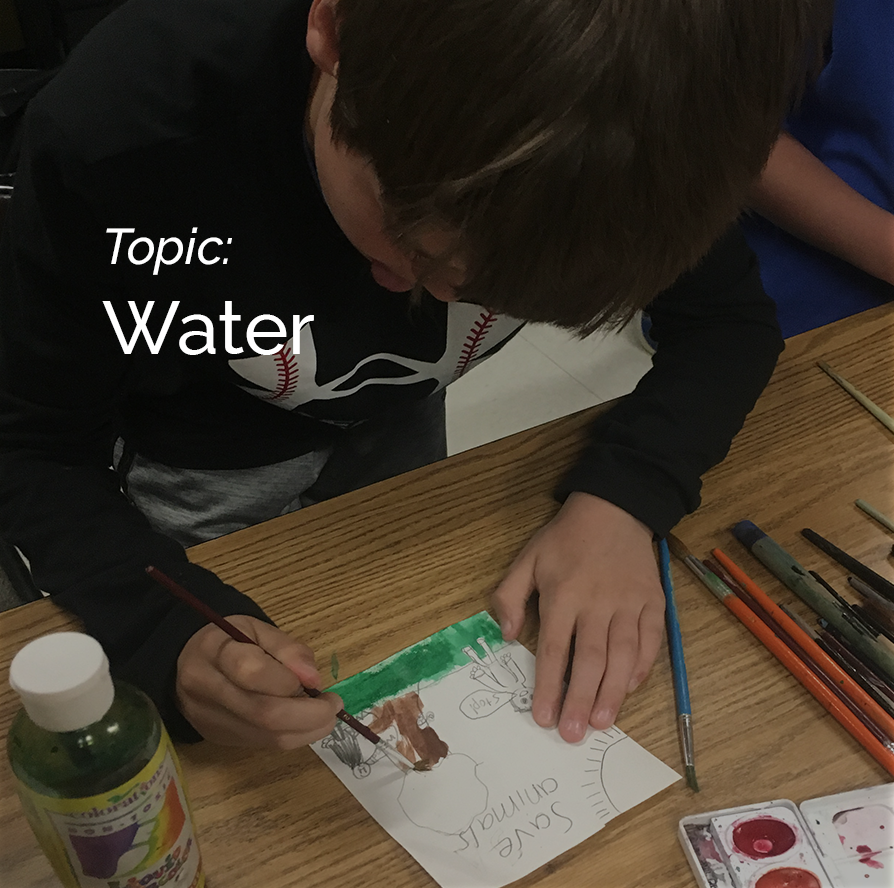
Art & Advocacy
Students learn about water problems around the world and how graphic designers use design to enact change. They design a poster advocating for a cause they care strongly about.
Primary Material: Watercolor
Link to Downloadable Lesson Plans
Link to Project
4th Grade

Rainforest Creature Marionettes
Students learn about animal defense mechanisms and invent an animal ideally suited to live in the rainforst. They create a marionette puppet from paper tubes, paint, craft sticks, and string.
Primary Material: paper towel tubes, tissue paper, glue
Link to Downloadable Lesson Plans
Link to Project

Me & My Monster
Students learn about visual poetry, create a poem about a monster helper, draw a self-portrait, and rearrange their poems in a visual way with the self-portrait.
Primary Material: Colored Pencils
Link to Downloadable Lesson Plans
Link to Project
5th Grade
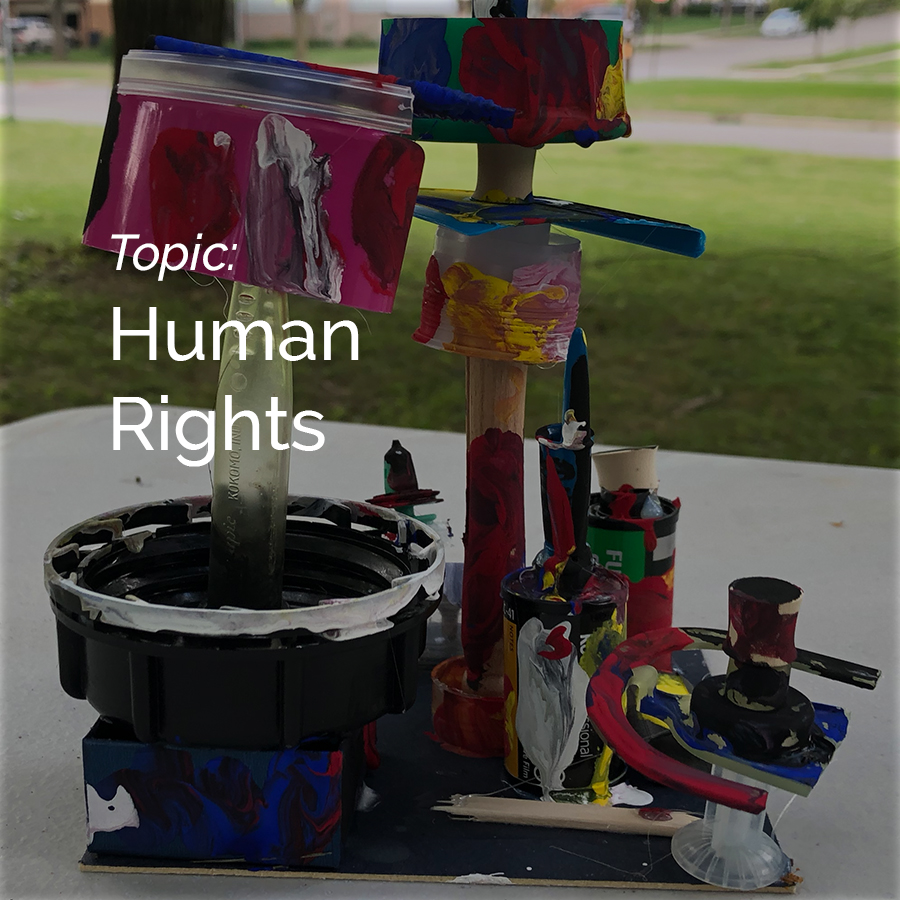
Embracing Challenges
Students learn about artists who faced different mental and physical challenges, and complete a recycled sculpture by getting their own series of challenges.
Primary Material: recycled materials
Link to Downloadable Lesson Plans
Link to Project
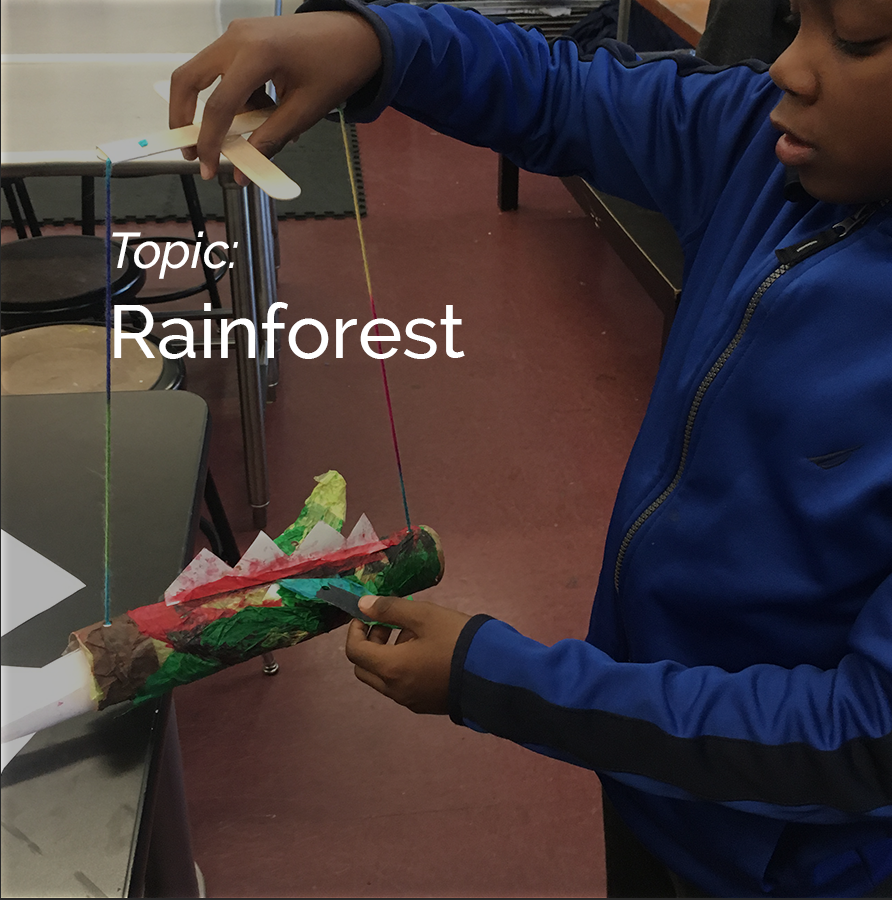
Rainforest Creature Marionettes
Students learn about animal defense mechanisms and invent an animal ideally suited to live in the rainforst. They create a marionette puppet from paper tubes, paint, craft sticks, and string.
Primary Material: paper towel tubes, tissue paper, glue
Link to Downloadable Lesson Plans
Link to Project
Add-on projects
The following are the projects that will be available in teacher -led OR student-led versions by the start of the 20/21 school year. You can, optionally, add either version to any groups that you set up. The teacher-led versions come with downloadable lesson plans.
Yes, you can make a group entirely with add-on courses.
The teacher-led projects offer the most benefits to the students, as group analysis, discussion, and presentations are built into each and every lesson, and we recommend you stick with them whenever possible. However, in some contexts, the student-led projects may be more appropriate. For example, engaging early finishers, using stations, or, our current distance learning.
Please note that even though the same basic premise is used, the student-led and teacher-led projects are slightly different in terms of materials and pacing. In regards to the Art & Literacy curriculum the student-led versions can be used across more grade levels, but lack some of the direct literacy connections available in the teacher-led versions (e.g, linking objectives, text sets).

Artist, Explorer, Scientist
Students learn John Audubon & scientific drawing. They choose an animal, research it, and draw an accurate picture in it’s habitat. They finish with watercolor. .
Primary Material: watercolor
Suitable for: upper and lower elementary
Link to Project
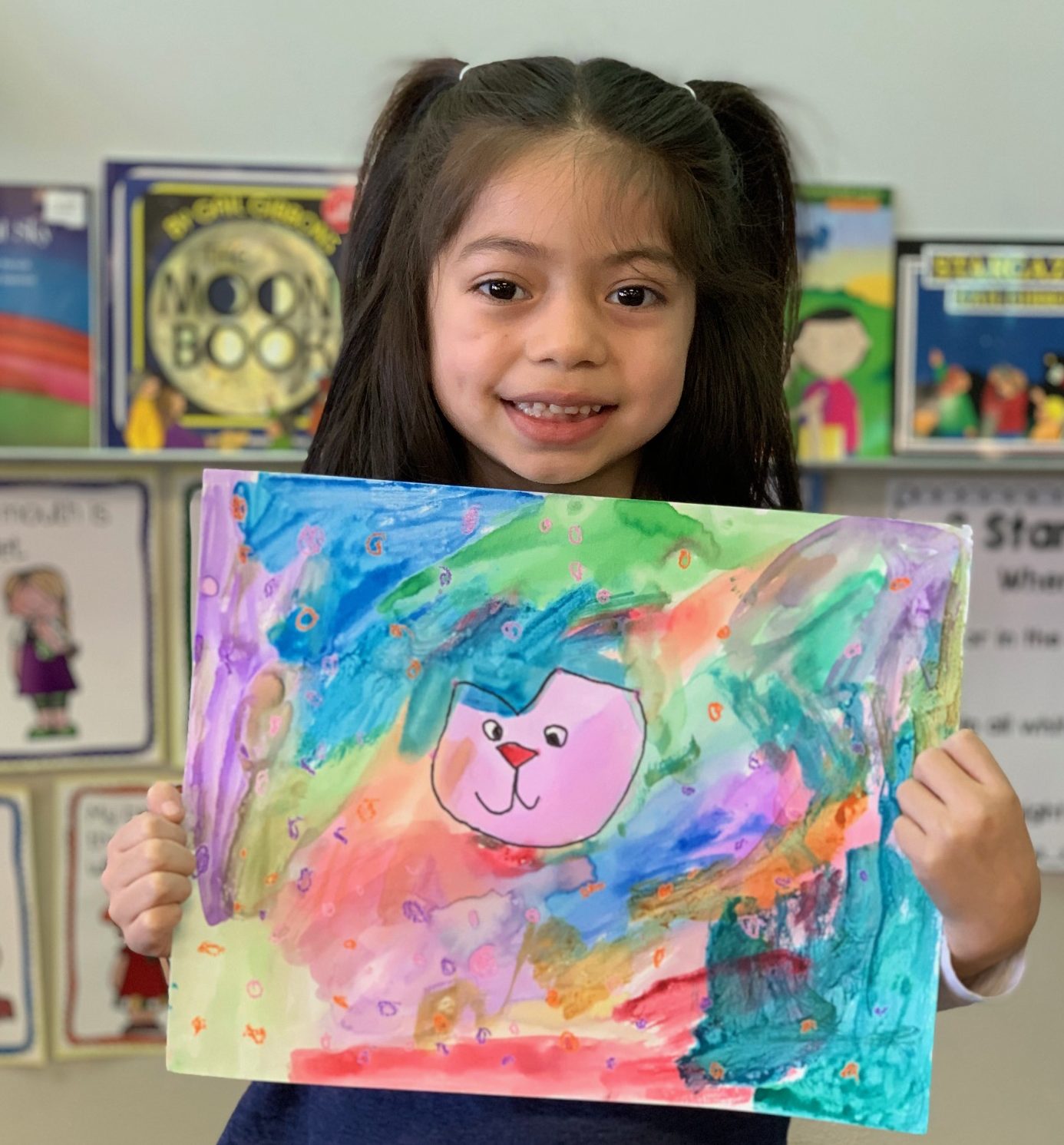
Designing the Zodiac
Students learn about constellations across many different cultures and create their own constellation and write their own origin story.
Primary Material: Oil pastels, watercolor
Suitable for: upper and lower elementary
Link to Project

Around the Neighborhood
Students learn about Jacob Lawrence and the Harlem Renaissance. They make a collage that depicts their own neighborhood, with a focus on color.
Primary Material: Collage
Suitable for: upper and lower elementary
Link to Project
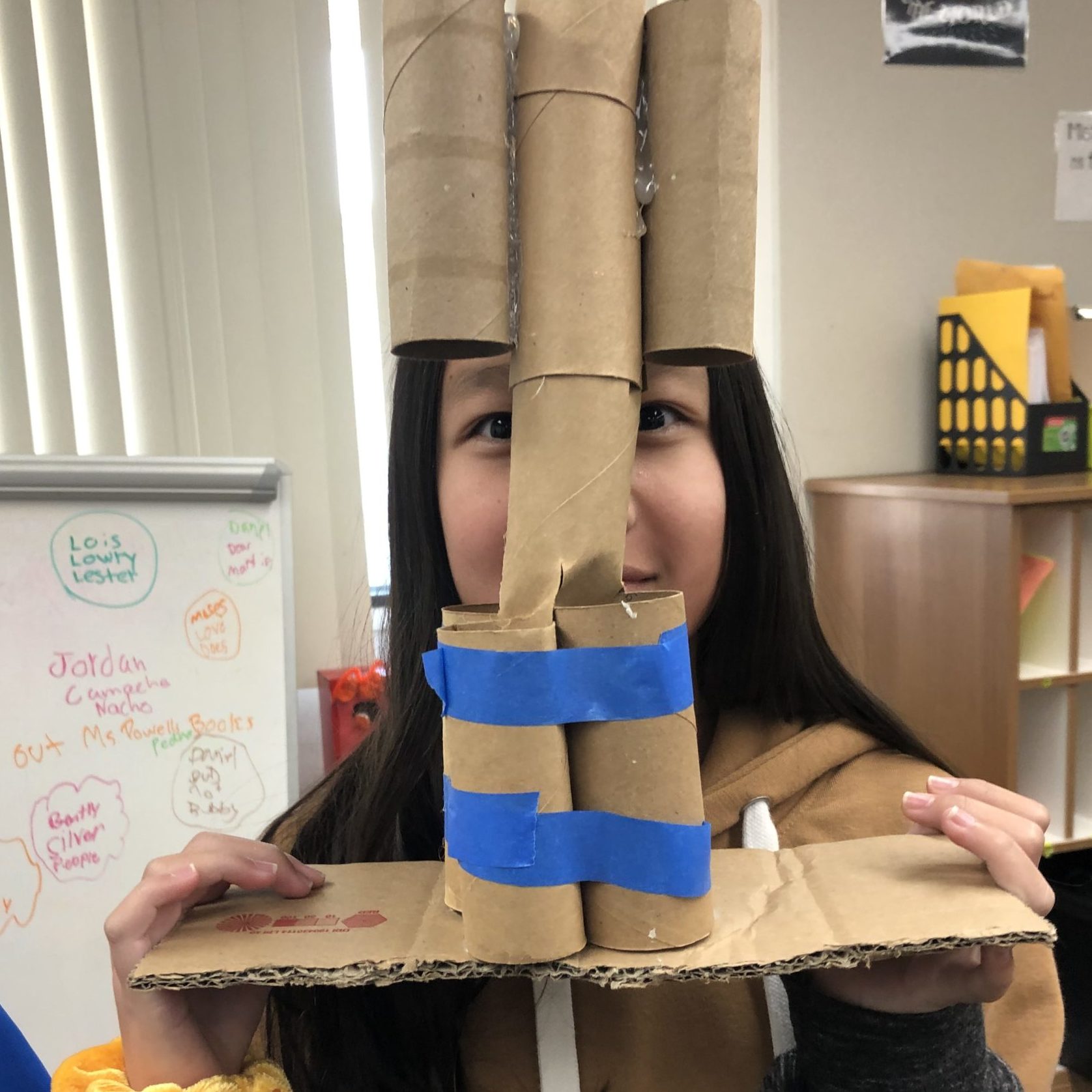
Embracing Challenges
Students learn about artists who faced different mental and physical challenges, and complete a recycled sculpture by getting their own series of challenges.
Primary Material: Recycled building materials
Suitable for: upper and lower elementary
Link to Project
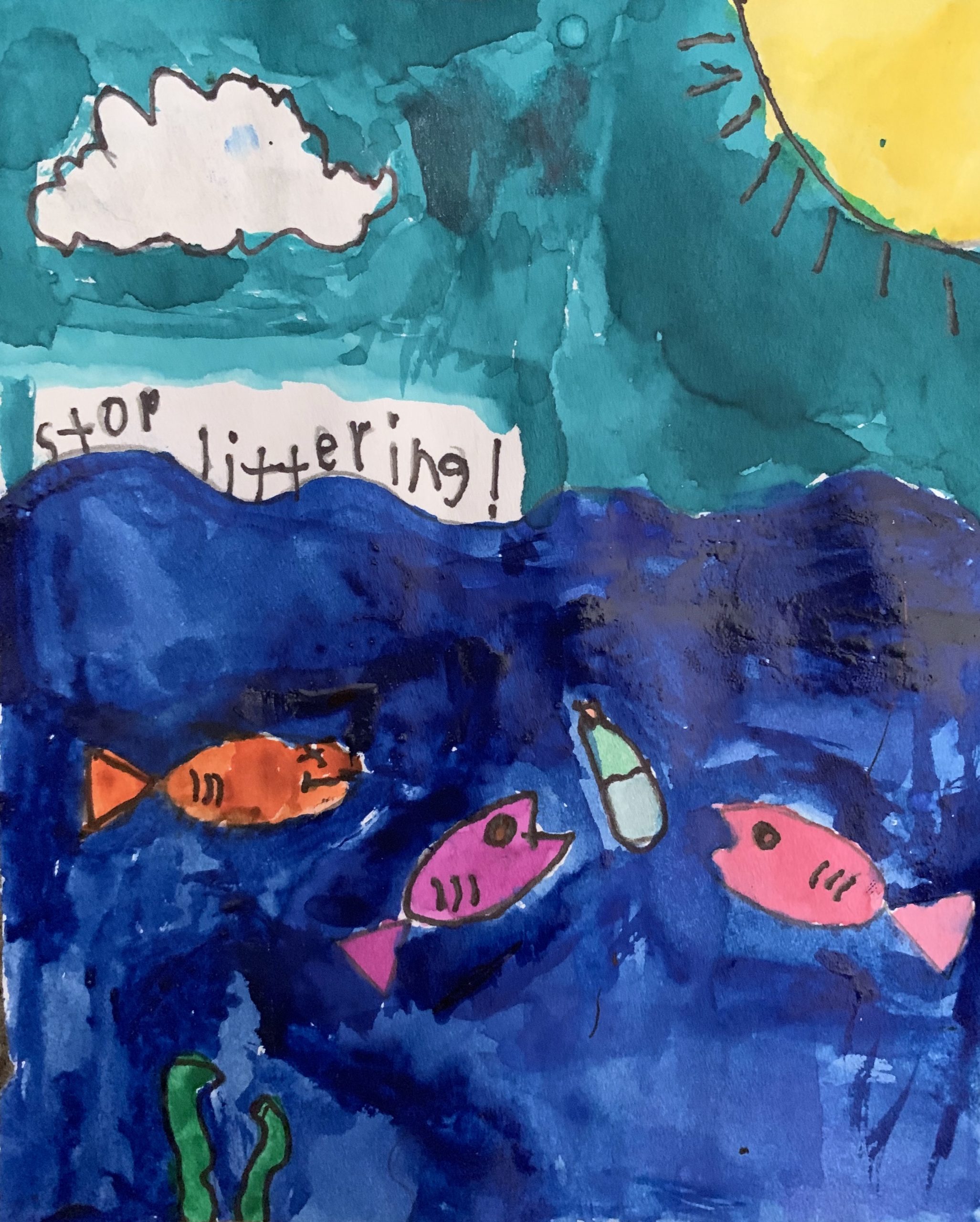
Art & Advocacy
Students learn about water problems around the world and how graphic designers use design to enact change. They design a poster advocating for a cause they care strongly about.
Primary Material: Colored Pencils
Suitable for: upper elementary
Link to Project
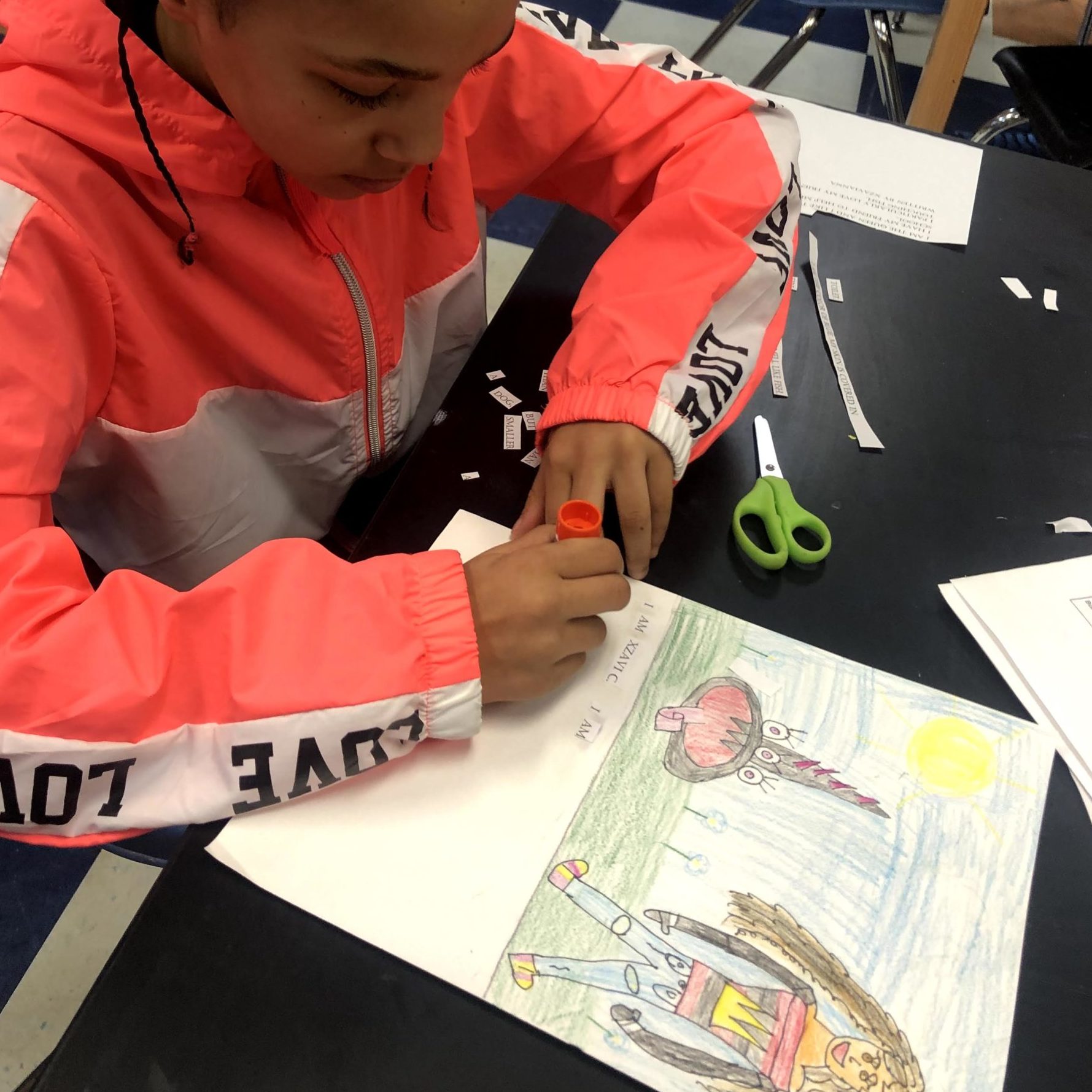
Me & My Monster
Students learn about visual poetry, create a poem about a monster helper, draw a self-portrait, and rearrange their poems in a visual way with the self-portrait.
Primary Material: Colored Pencils
Suitable for: upper elementary
Link to Project

Mexican Alebrijes
Students learn about the history and creation of a Mexican folk art called Alebrije. Students create their own imaginary creatures. There is an emphasis on color choices and texture.
Primary Materials: collage, oil pastel, watercolor
Suitable for: upper and lower elementary
Link to Project

Enchanted Lands
Students learn about compositional elements as they create a magical setting that could host fairy tales.
Primary Material: collage, tempera paint
Suitable for: lower or upper elementary
Link to Project

Symbol & Self
Students create metaphorical self-portraits.
Primary Material: Colored pencil
Suitable for: lower and upper elementary
Link to Project

The Secret Language of Objects
Students learn how objects can represent an idea, or serve as symbols. They use symbols to create an artwork that can tell a story.
Primary Material: colored pencils
Suitable for: upper and lower elementary
Link to Project
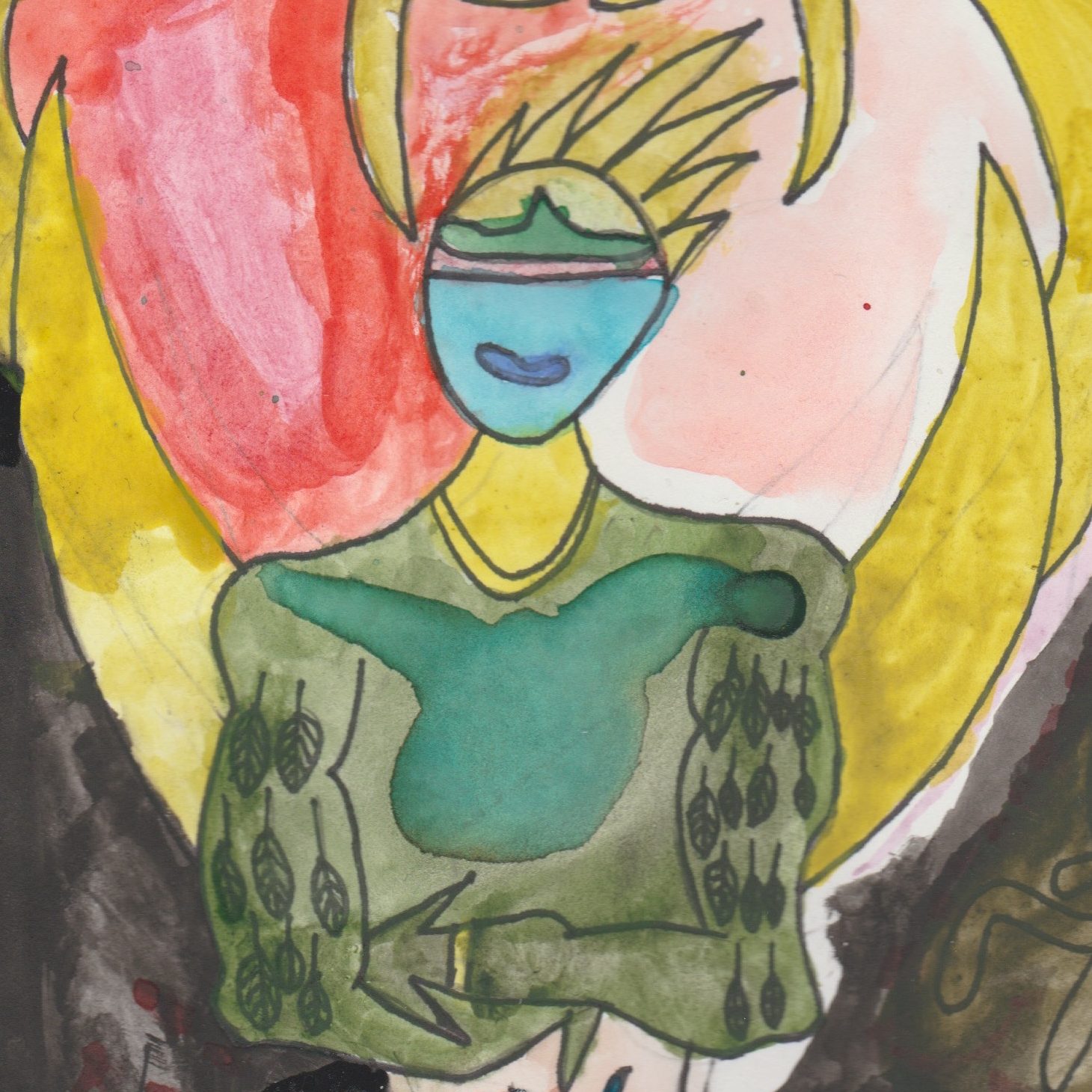
Superheroes
Students learn to recognize shapes and types of lines as they design and draw their own superheroes.
Primary Materials: Collage, watercolor
Suitable for: lower or upper elementary
Link to Project
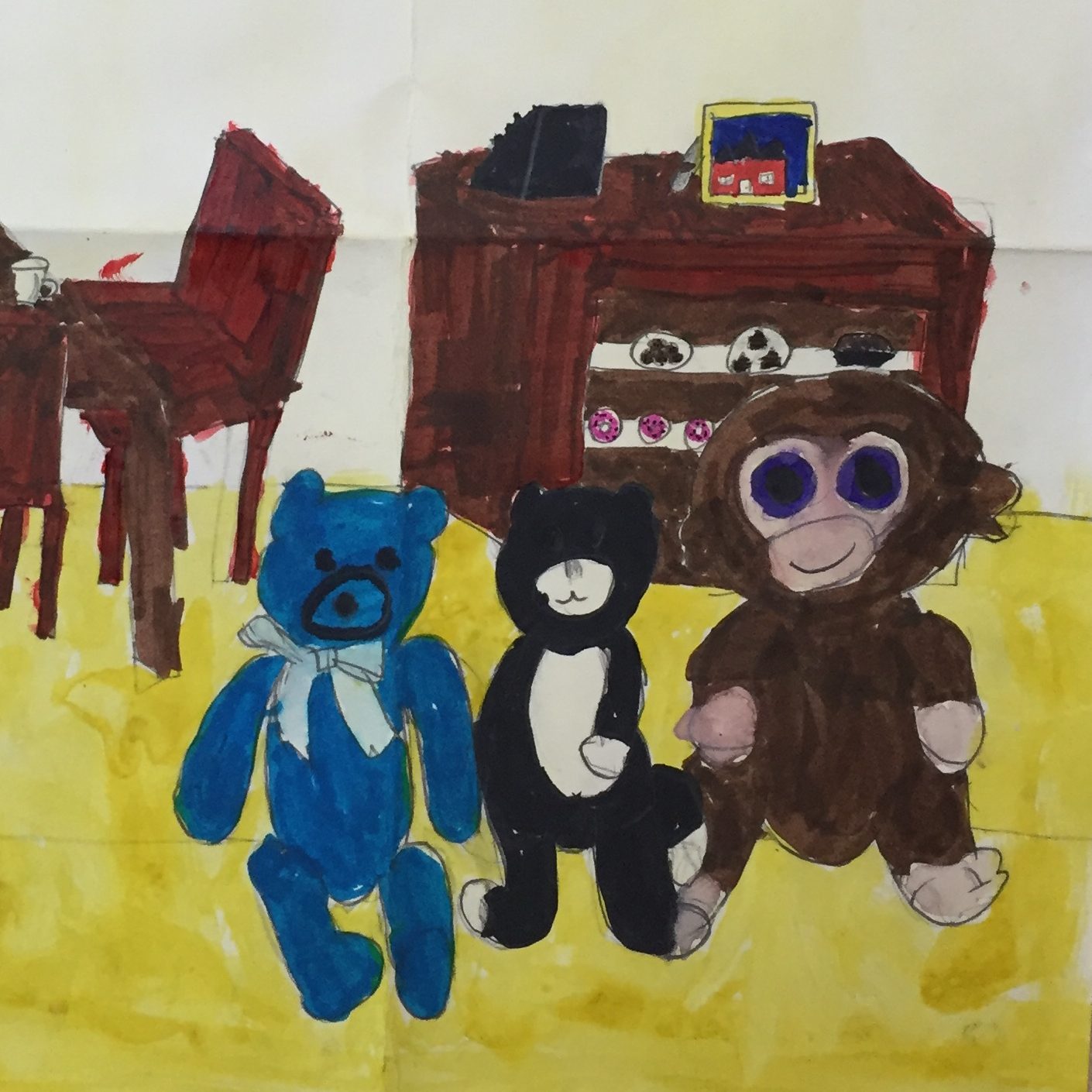
A Toy's Story
Students depict where their toys go in their imagination.
Primary Material: markers
Suitable for: lower and upper elementary
Link to Project

Anthropomorphic Animals
Students choose an animal, draw it realistically from photographs, and then use the background to show what human traits the animal has come to represent.
Primary Material: markers
Suitable for: upper and lower elementary
Link to Project

Rainforest Creature Marionettes
Students learn about animal defense mechanisms and invent an animal ideally suited to live in the rainforst. They create a marionette puppet from paper tubes, paint, craft sticks, and string.
Primary Material: cardboard tubes, paint
Link to Project
Suitable for: upper and lower elementary
